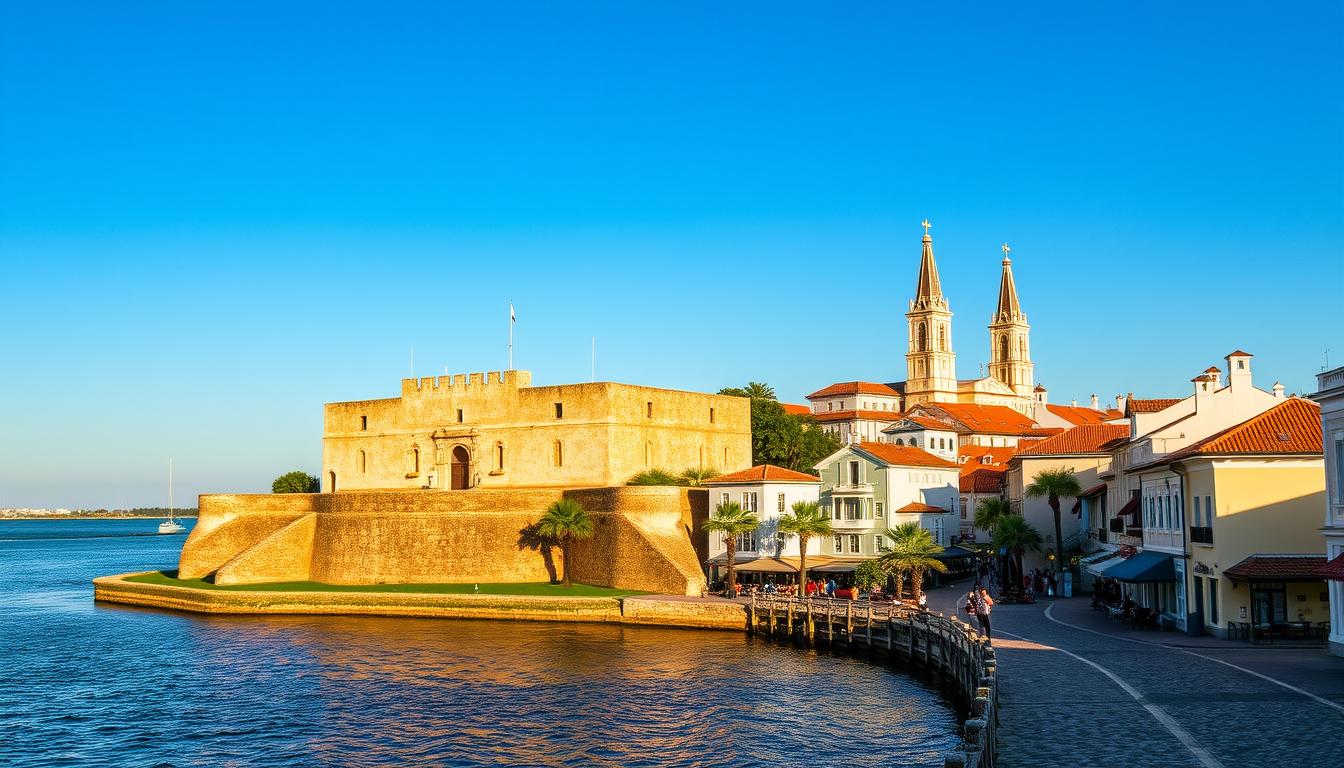St. Augustine, Florida, is the oldest continuously inhabited city in the United States, founded in 1565 by Spanish admiral Don Pedro Menendez de Aviles. With over 450 years of layered history, the city stands as a unique blend of Spanish, British, and American influence, visible in its streets, architecture, and enduring landmarks.
Visitors can explore historic sites like Aviles Street — the oldest street in the country — the immersive Colonial Quarter, and the iconic Castillo de San Marcos. These attractions not only showcase the city’s military and colonial past but also offer engaging, educational experiences for all ages.
Beyond the main landmarks, St. Augustine is home to cultural institutions like the Lightner Museum and lesser-known historic sites like Fort Mose, the first legally sanctioned free Black settlement in the U.S. Whether you’re interested in art, architecture, or American history, St. Augustine delivers a rich and accessible glimpse into the nation’s earliest stories.
St. Augustine, founded in 1565, holds a prominent position in America’s history as the oldest continuously inhabited European settlement in the continental United States. The city’s rich narrative is deeply intertwined with the history of St. Augustine, showcasing over 450 years of cultural transformations and significant events. Visitors can explore the impact of the Spanish influence in Florida, evident in its architecture, traditions, and historic landmarks in St. Augustine.
Top Historic Attractions
St. Augustine is home to some of the most iconic historic sites in the United States, offering visitors a direct connection to over four centuries of colonial, military, and cultural history. These attractions are more than just relics — they represent pivotal chapters in the development of early America. From military fortifications and archaeological parks to Gilded Age museums, the city offers a layered experience of the past that’s both educational and visually striking.
Castillo de San Marcos: The Stronghold of Spanish Florida
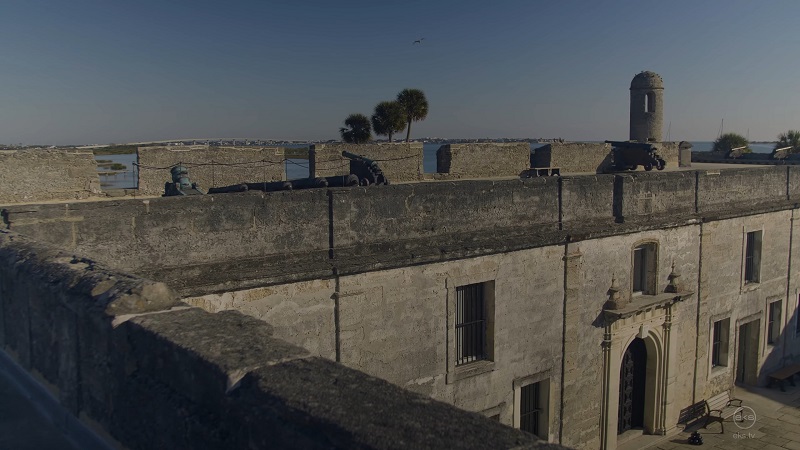
Dominating the western shore of Matanzas Bay, the Castillo de San Marcos is not only the oldest masonry fort in the continental United States but also one of the most enduring symbols of Spain’s colonial ambitions in the New World. Construction began in 1672, following a devastating British raid, and the fort was completed in 1695 using coquina stone — a material both resilient and unique to the region.
Unlike many wooden structures of the time, the coquina walls absorbed cannon fire rather than crumbling under it, giving the Castillo a tactical edge and helping it withstand multiple sieges over the centuries. The fort changed hands several times as colonial powers shifted, moving from Spanish to British control, and later serving as a U.S. military post. Today, visitors can explore its well-preserved bastions, gun decks, and interior chambers, while interpretive exhibits and live reenactments provide vivid insight into 17th- and 18th-century military life.
Fountain of Youth Archaeological Park: Between Myth and History
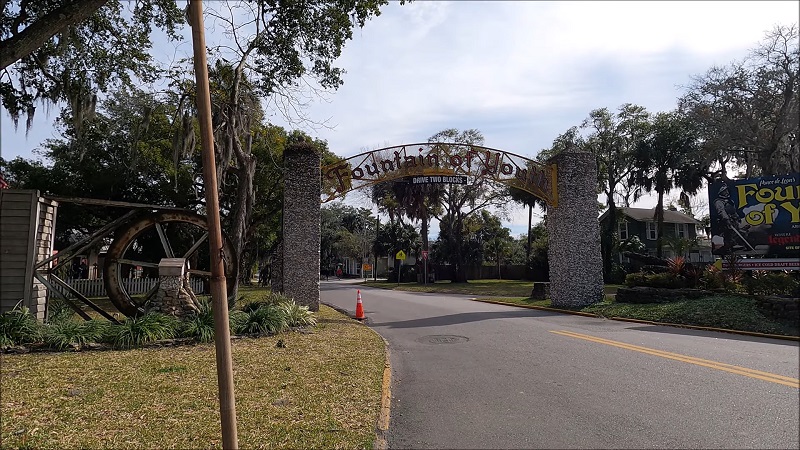
Perhaps the most famous of St. Augustine’s legends, the Fountain of Youth has long captured imaginations with its promise of eternal vitality. While the myth often overshadows the site’s historical value, the Fountain of Youth Archaeological Park is a substantial destination for those interested in the deeper roots of European settlement in North America.
The park sits on what archaeologists believe to be the location of the original 1565 Timucua village and the first Spanish mission, Nuestra Señora de la Leche. Excavations at the site have unearthed early Spanish artifacts and evidence of Native American habitation, anchoring the park in historical credibility.
Visitors to the park can drink from the so-called spring, explore a recreated colonial village, walk through waterfront lookout towers, and view ongoing archaeological projects. The blend of legend, interpretive education, and scientific discovery makes the Fountain of Youth one of St. Augustine’s most multifaceted attractions.
Lightner Museum: Elegance and Excess in the Gilded Age
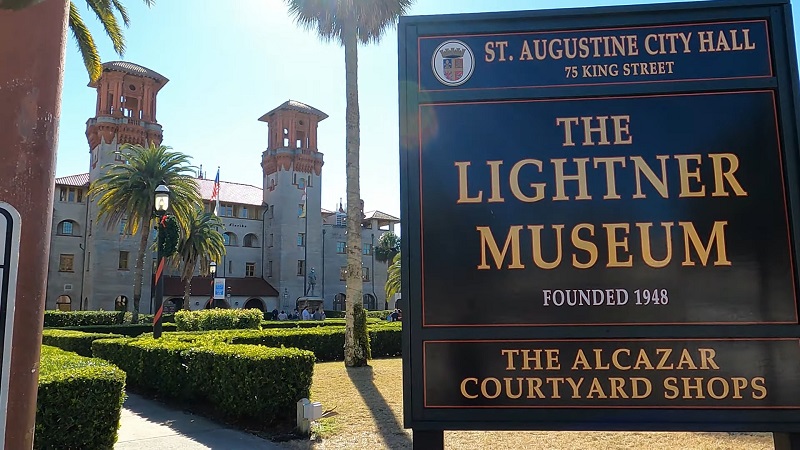
While St. Augustine’s early history is dominated by tales of conquest and colonization, the late 19th century introduced a new chapter marked by leisure and opulence. At the heart of this transformation was Henry Flagler, the oil magnate whose investments turned the city into a winter retreat for the American elite. The Lightner Museum, housed in the former Alcazar Hotel — built in 1888 — stands as a monument to that era.
The hotel was one of Flagler’s architectural masterpieces, designed in the Spanish Renaissance Revival style with sweeping courtyards, arched windows, and interior grandeur. After the hotel closed in the 1930s, the building was purchased by Otto Lightner, a Chicago publisher and collector, who converted it into a museum dedicated to the decorative and fine arts of the Gilded Age.
The museum’s collections include Victorian furniture, stained glass by Louis Comfort Tiffany, musical instruments, and period curiosities that speak to the tastes and eccentricities of 19th-century America. The museum doesn’t merely house antiques; it contextualizes them, offering insight into the changing social dynamics, artistic expression, and aspirations of the era’s wealthiest citizens.
The Old Jail: St. Augustine’s Most Chilling Historic Landmark
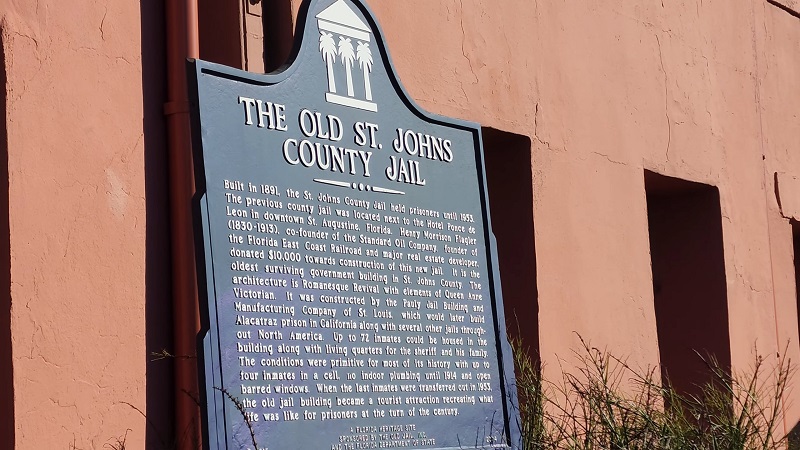
Built in 1891 under the direction of Henry Flagler, The Old Jail offers one of the most unusual and evocative windows into St. Augustine’s past. Located just north of the city gates, this Romanesque Revival structure served as the city’s main correctional facility until 1953. Today, it stands preserved as a museum, offering a rare and often unsettling look at law enforcement and incarceration practices during the late 19th and early 20th centuries.
Unlike most jails from its era, The Old Jail was designed to blend into its surroundings, its pastel pink exterior and decorative towers disguising the brutal conditions within. Behind those deceptively charming walls were iron-barred cells, primitive sanitation, and strict routines that shaped the lives of inmates over a span of more than six decades.
Inside the Museum: Grit and Gritty Details
The Old Jail Museum invites visitors into a fully immersive experience. Guided tours, led by costumed interpreters, depart every 15 minutes and include access to original cell blocks, the sheriff’s living quarters, and the gallows yard. The tours last about 30 minutes and are rich with both historical context and theatrical storytelling. Exhibits include period-specific law enforcement gear, vintage booking records, and one particularly rare artifact — Florida’s first fingerprinting kit, which highlights the early evolution of forensic science.
Guests are encouraged to arrive early, as the grounds feature additional exhibits and photo opportunities. Free parking is available on-site, making it an easy addition to any historical itinerary.
The Harsh Realities of Incarceration
Life inside The Old Jail was grim. At its peak, the facility held up to 84 prisoners, including women, many of whom were housed in overcrowded, unsanitary conditions. Meals were minimal and poorly regulated, often contributing to illness. Labor was a central component of daily life; inmates were assigned work details both inside the jail and outdoors — including tending the ornamental front gardens used to disguise the building’s true function.
Perhaps most unsettling is the solitary confinement cell, a small, windowless chamber that continues to attract interest for its chilling atmosphere. Visitors frequently report feelings of unease and unexplained cold spots in this part of the building. Over the course of the jail’s operation, eight executions took place on site, adding a layer of tragic finality to its history.
A Registered Historic Site With a Haunting Legacy
Now listed on the National Register of Historic Places, The Old Jail has become a fixture of St. Augustine’s historical circuit — not only for its architectural uniqueness but for the stories it preserves. Unlike other attractions rooted in royalty, conquest, or exploration, this site captures a lesser-told narrative: one of punishment, social control, and the lived experience of incarceration in a bygone era.
The Old Jail is not simply a building with a past. It’s a rare preservation of criminal justice history, combining storytelling with material culture to create a compelling, sometimes uncomfortable, but always memorable encounter with the darker side of St. Augustine’s heritage.
St. George Street: The Cultural Spine of St. Augustine
St. George Street is the centerpiece of St. Augustine’s historic district — a pedestrian-only corridor that threads through the heart of America’s oldest city. First established in 1565, this stretch of cobbled roadway remains one of the most visited and vibrant areas in the city. With its preserved colonial-era architecture, constant hum of foot traffic, and seamless blend of commerce and culture, St. George Street offers a sensory introduction to the character of St. Augustine.
Whether you’re drawn by its historical relevance, shopping options, or culinary variety, this historic promenade delivers a concentrated dose of the city’s past and present.
Shops, Galleries, and Local Flavor
Shopping on St. George Street is far removed from the formulaic chain-store experience. Instead, it offers a curated blend of independently owned boutiques, artisan shops, and specialty retailers that reflect the city’s eclectic spirit. You’ll find everything from handcrafted leather goods and antiques to regional artwork, local books, and historic-themed gifts.
The area is notably family-friendly, with several shops offering children’s books, toys, and interactive experiences that appeal to younger visitors. Street performers and live demonstrations often punctuate the shopping experience, adding a dynamic layer to each visit.
The street’s culinary scene is just as diverse. From historic taverns and seafood shacks to upscale bistros and bakeries, dining on St. George Street caters to every palate. Outdoor seating is common, providing an ideal vantage point to enjoy the ambiance — especially in the cooler months. The focus on local ingredients and regional cuisine adds authenticity to every meal, whether you’re sampling Minorcan chowder or fresh-caught shrimp.
Historic Anchors and Seasonal Spectacle
St. George Street is more than a popular walkway — it’s a historic artery that links some of the city’s most important landmarks. Walking south to north, you’ll pass the Colonial Quarter, Cathedral Basilica, and the Government House Museum, eventually reaching the Castillo de San Marcos at the water’s edge. Its orientation and preservation make it a living map of the city’s evolution, from Spanish colony to American city.
During the winter season, the street becomes a focal point of the Nights of Lights Festival, an award-winning holiday spectacle that illuminates the district with over three million white lights. Recognized by National Geographic as one of the world’s top holiday displays, the event transforms St. George Street into a glowing passage of celebration and community gathering.
Flagler College: Where History and Higher Education Converge
Flagler College stands as one of St. Augustine’s most distinguished landmarks — a liberal arts institution housed within one of the nation’s most architecturally significant buildings. Set in the heart of the historic district, the college occupies the former Hotel Ponce de Leon, a Spanish Renaissance masterpiece originally built in 1888 by oil magnate and railroad tycoon Henry Flagler. Today, it blends academic rigor with architectural splendor, offering students and visitors alike a rare intersection of history, art, and education.
While the college itself was established in 1968, its roots are deeply embedded in the story of Florida’s Gilded Age, when Flagler’s investments transformed St. Augustine into a luxury resort destination. The conversion of the hotel into an academic institution preserved not only the structure but also its cultural relevance, allowing a new generation to learn within walls that once hosted America’s elite.
A Living Monument to the Gilded Age
The architectural centerpiece of Flagler College is Ponce de Leon Hall, a visually commanding structure that continues to draw architects, historians, and design enthusiasts from around the world. Designed by Carrère and Hastings, the same firm behind the New York Public Library, the building was one of the first in the U.S. constructed entirely of poured concrete — a revolutionary concept at the time.
The hall’s grand lobby features a soaring 68-foot domed ceiling, flanked by sweeping murals and lavish detailing. Perhaps most remarkable is its collection of Louis Comfort Tiffany stained glass windows — the largest of its kind in the world — which cast vibrant light through the historic dining room, still in daily use by students.
Cultural Preservation and Contemporary Expression
Flagler College is not a static monument but an evolving institution that honors its past while engaging with the present. The Flagler Room, once the hotel’s Women’s Grand Parlor, houses rare materials including the largest intact piece of white onyx in the Western Hemisphere. Historical artifacts from the original hotel’s furnishings are also displayed, offering insight into the luxury and artistry of Gilded Age America.
Beyond preservation, the college is also home to the Crisp-Ellert Art Museum, opened in 2007. This modern space supports rotating exhibitions of contemporary art and is committed to featuring works by local, national, and international artists, expanding the cultural footprint of the campus. The museum serves as a bridge between the historical environment and the modern creative voices that shape today’s artistic discourse.
A Diverse and Engaged Student Body
Flagler College enrolls approximately 2,500 students, with about 60% from Florida and the remainder representing various states and international locations. The intimate campus size fosters a close-knit academic community, while the college’s location within one of America’s most historic cities offers students a daily backdrop rich with heritage and inspiration. Students study liberal arts in a setting unlike any other — one where architectural grandeur and cultural significance are part of the curriculum.
Other Must-See Attractions in St. Augustine
While landmarks like the Castillo de San Marcos and St. George Street often headline any visit to St. Augustine, the city’s richness lies just as much in its lesser-known sites. These quieter corners of the historic district offer immersive perspectives into colonial education, regional winemaking, and the deeply layered human history that shaped America’s oldest city. Together, they round out a deeper, more nuanced understanding of St. Augustine’s heritage.
The Oldest Wooden School House: A Glimpse into 18th-Century Education

Located just inside the city gates, the Oldest Wooden School House is one of St. Augustine’s most distinctive historic structures. Dating back to the early 1700s, this hand-built cedar-and-cypress building offers a rare look at colonial-era education during the time of Spanish rule.
Inside, visitors will find a preserved classroom outfitted with original tools: wooden benches, chalk slates, quill pens, and textbooks from the period. The setting is enhanced by period-appropriate mannequins and narration that re-creates the daily life of students and teachers. It’s not just a photo opportunity — it’s a surprisingly sobering reminder of how education began in the New World, in conditions far removed from modern classrooms.
The structure itself is a historical artifact, held together by wooden pegs and iron spikes rather than nails, and anchored by heavy chains to protect it from hurricane winds — a practice that has become part of its legend.
San Sebastián Winery: Tasting Florida’s Viticultural Heritage
Founded in 1996, San Sebastián Winery is a cornerstone of Florida’s modern wine industry and an unexpected highlight within the city’s historical landscape. Housed in a restored East Coast Railway building just outside the main historic district, the winery offers complimentary guided tours and tastings that reveal the story behind local grape cultivation in a climate not traditionally associated with winemaking.
Visitors are guided through the fermentation room, bottling area, and cellar, all while sampling a curated selection of wines made from Muscadine grapes native to the American Southeast. Signature blends include dessert wines, ports, and table wines, each with a distinct regional character. The rooftop bar and live music events add a modern layer to the experience, but the real appeal lies in connecting with a lesser-known but enduring aspect of Florida’s agricultural history.
Tolomato Cemetery: Silent Stories of the City’s Past
Just off St. George Street, shaded by old oaks and enclosed by coquina walls, Tolomato Cemetery is one of the most solemn and historically resonant sites in St. Augustine. Originally established on the grounds of a former Guale Indian village and Franciscan mission, the cemetery was officially opened for Catholic burials in the 18th century. It remained active until the late 1800s.
This sacred space contains approximately 1,000 burials, although only a fraction are marked with visible headstones. Among those interred are priests, colonial settlers, freed Black men and women, and members of the Minorcan community — a group instrumental in the city’s post-Spanish development. One of the most notable figures buried here is Father Felix Varela, a Cuban priest and political reformer whose life continues to inspire devotion.
Visiting Tolomato is less about sightseeing and more about quiet reflection. The site is generally closed to the public except during occasional guided tours, which provide deeper historical context and personal stories that connect names on markers with episodes from St. Augustine’s long and diverse past.
Conclusion
St. Augustine is a rare place where history isn’t preserved behind glass — it’s walked, touched, and lived. From colonial forts and centuries-old streets to quiet cemeteries and grand hotels turned colleges, the city offers a direct connection to the roots of American life. Every stop reveals another piece of the past, making a visit here not just a trip, but a deeper understanding of the country’s oldest stories still unfolding today.

